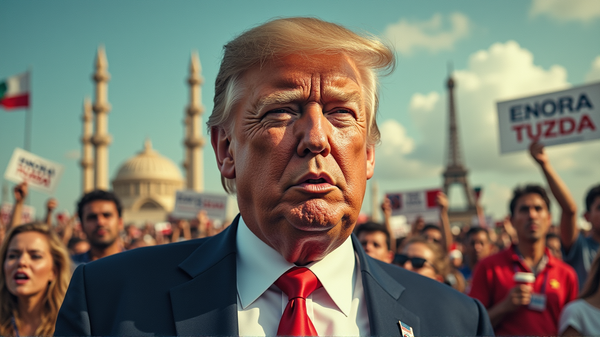Trump's Deal Brings Nvidia and AMD Closer to China - But at What Cost?
Nvidia and AMD navigate an unusual revenue scheme to secure licenses for China, exploring the impact on global tech dynamics.

In a bold and distinctive maneuver, the U.S. government under President Donald Trump has entered into an unusual arrangement with tech giants Nvidia and AMD. By agreeing to pay 15% of their Chinese revenue to the U.S. government, these companies are unlocking an exceptional opportunity to access the Chinese semiconductor market.
The Unorthodox Revenue Pact
Nvidia and AMD have struck an unusual chord with this revenue-sharing agreement facilitated by the Trump administration. While analysts hail the opportunity as beneficial, the parameters are exceedingly uncommon, informed by President Trump’s transactional style. As stated in CNBC, this arrangement opens doors for crucial chip exports, notably Nvidia’s H20 and AMD’s MI308, paving the path to rekindling their presence in China’s vast market.
Market Reactions and Economic Implications
The immediate response from investors has been cautiously optimistic. Shares of both companies edged higher, signaling a recognition of potential gains outweighing the imposed revenue cut. “From an investor perspective, it’s still a net positive, 85% of the revenue is better than zero,” says Ben Barringer, a global technology analyst.
However, the question of whether Nvidia and AMD might adjust prices to offset the new levy lingers, posing a strategic commercial conundrum.
Limited Influence Beyond Semiconductors
While this deal showcases a distinct pattern of diplomacy mingled with business acumen, its applicability to other industries remains constrained. Semiconductors hold a strategic significance that extends into various domains such as artificial intelligence and military applications, justifying their unique treatment. Nick Patience from The Futurum Group points out the unlikely expansion of similar agreements into sectors such as software or consumer electronics.
China’s Calculated Position
As discussions grow around the potential impacts, China finds itself between economic necessity and geopolitical skepticism. The nation’s demand for advanced chips to fuel its AI initiatives must weigh against concerns over potential backdoors—a narrative Nvidia actively disputes. Despite the geopolitical tension, the chips remain a sought-after asset in China’s tech arsenal.
A Divergent Precedent
President Trump’s characteristic style has unequivocally set a precedent with this negotiation, eluding easy classification. Neil Shah of Counterpoint Research equates the move to an indirect tariff, reflecting the broader complexities in U.S.-China economic interactions. This strategic give-and-take marks an exploration into new diplomatic territories, encapsulating the intricate interdependencies of modern global trade.
This landscape, as it unfolds, offers a captivating insight into how technology, policy, and international relations are deeply interwoven, constantly reshaping the future of industrial diplomacy.





